by Ryan Anderson
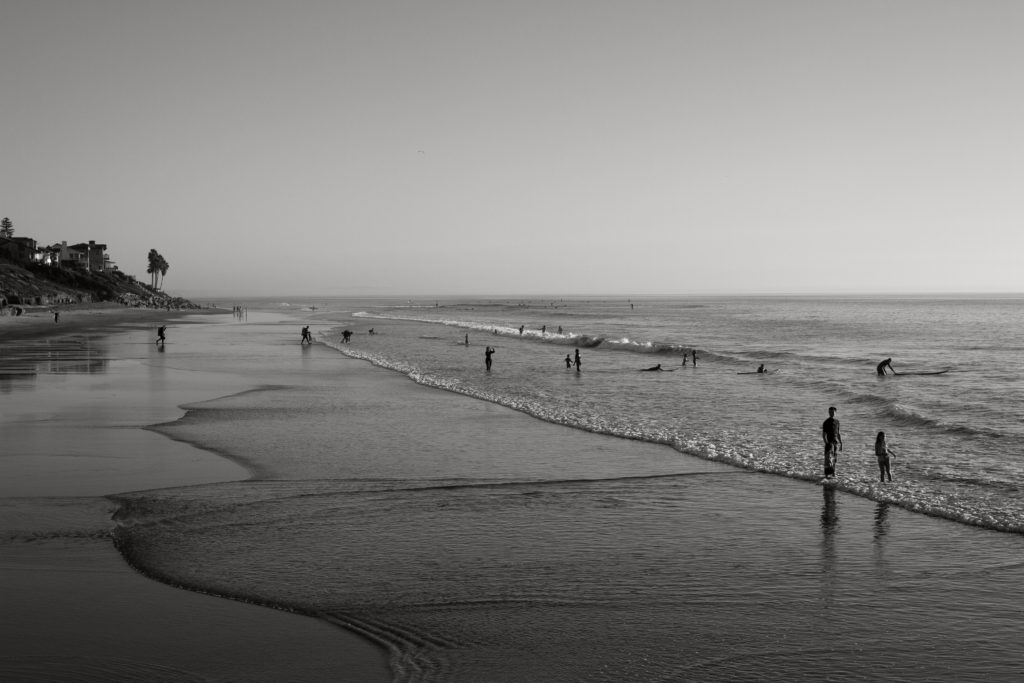
I started this series a few years ago. It just sort of took shape. Out of nowhere, I found myself taking these images along the coast that were very pulled back and distant. I found myself including people but keeping them small in the frame. There are always precursors and roots to these sorts of things. I’ve seen plenty of images of beaches and coasts, from various photographers, and they have all had their influence on how I view the world. I think things work in a similar way with reading ethnography, theory, and history. It’s an accumulation that shapes your ideas and perceptions, and it all distills down in you. And then it finds its way out and it can take various forms.
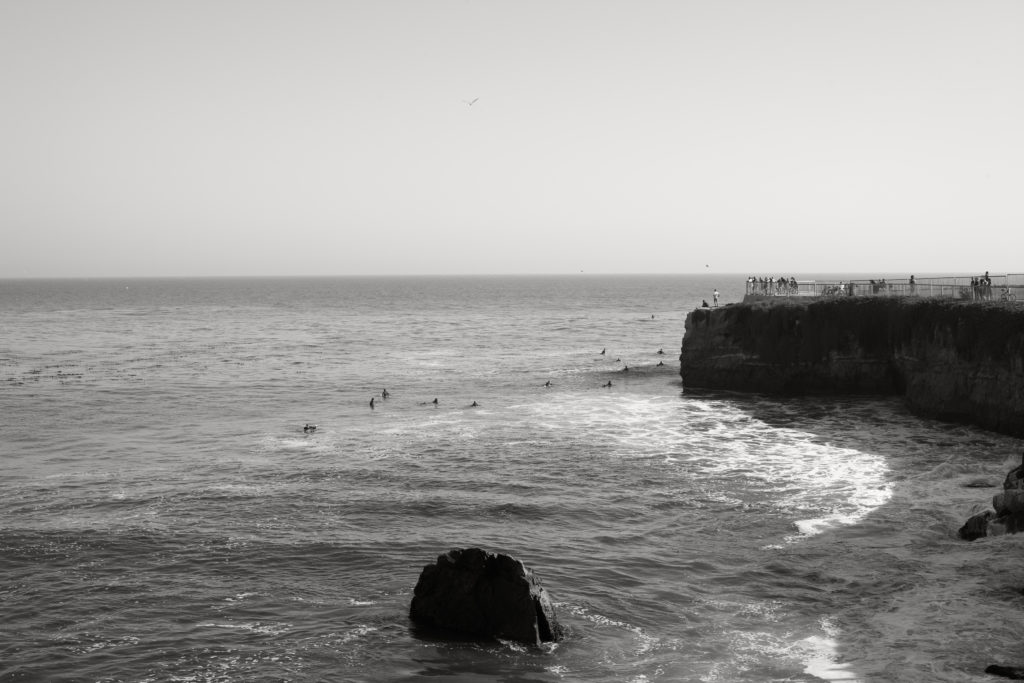
In this case, the precursor is the work of the late photographer Harry Callahan. He made a lot of these kinds of photographs from a distant vantage point looking down on coastal spaces. Oftentimes, he was photographing from up above. I saw those images years ago; many of them were included in his 1980 book Water’s Edge. I liked a lot of his other images, but those particular beach photographs were not appealing to me at the time. It’s interesting how that works. I used to wonder why Callahan would do that. Why would he take images from so far away? And from that detached vantage point? Why didn’t he just get down there closer to the sand, the water, and all the people? What was he trying to say? I was ambivalent about those photographs. But they stayed with me.
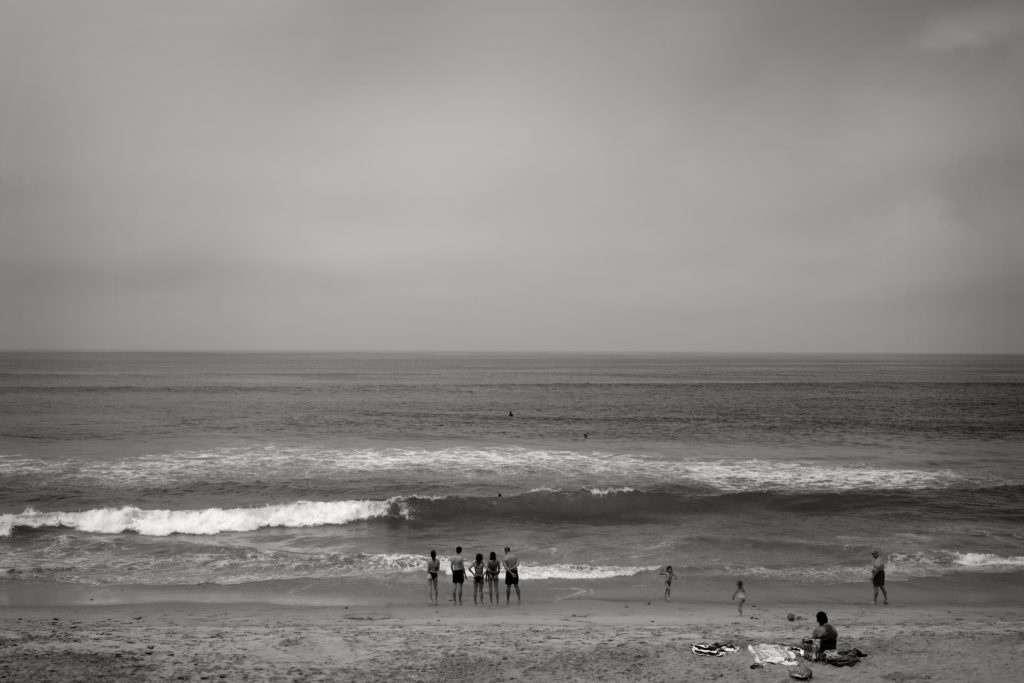
And then one day I found myself making very similar images. It wasn’t something that I planned. I didn’t come up with a “Harry Callahan-esque” project. Instead, every now and then I’d find myself adding one or two of these types of images into what I was photographing. They started to accumulate. The first one, the one that got all of this going, was the image from 2017 (Image 1). I took that down in my old hometown of Carlsbad, California. The image was taken at low tide from the “Warm Water” jetties, facing south. If you look closely, there are just so many stories in there. It looks like a father with two kids in the foreground on the right side of the frame. Then all the people out in the water: the woman taking a photo, the kids paddling out, the two other kids getting ready for a little wave coming through…and those people heading out in SCUBA gear. Just so many little stories right there on the edge of the sea.
But there are larger stories and processes at play too. The riprap and the homes right on the edge of the beach speak to those stories and processes. This series of images coincides with a shift in my research. Right around 2017-2018, I started a new project that examines the histories and politics of coastal adaptation. I suddenly became very interested in coastal erosion, sea level rise, and what people were trying to do about it. I was also interested in the bigger scope of it all: thinking of “the coast” as a very fluid, dynamic space. It is this narrow strip of territory that has changed, and will continue to change, endlessly. Despite it all, humans create and imbue so much meaning within such spaces. They make them part of their lives and routines, and transform them from abstract spaces into humanized, socialized, and personalized places. And those places become the settings for an endless array of everyday moments, events, and stories.
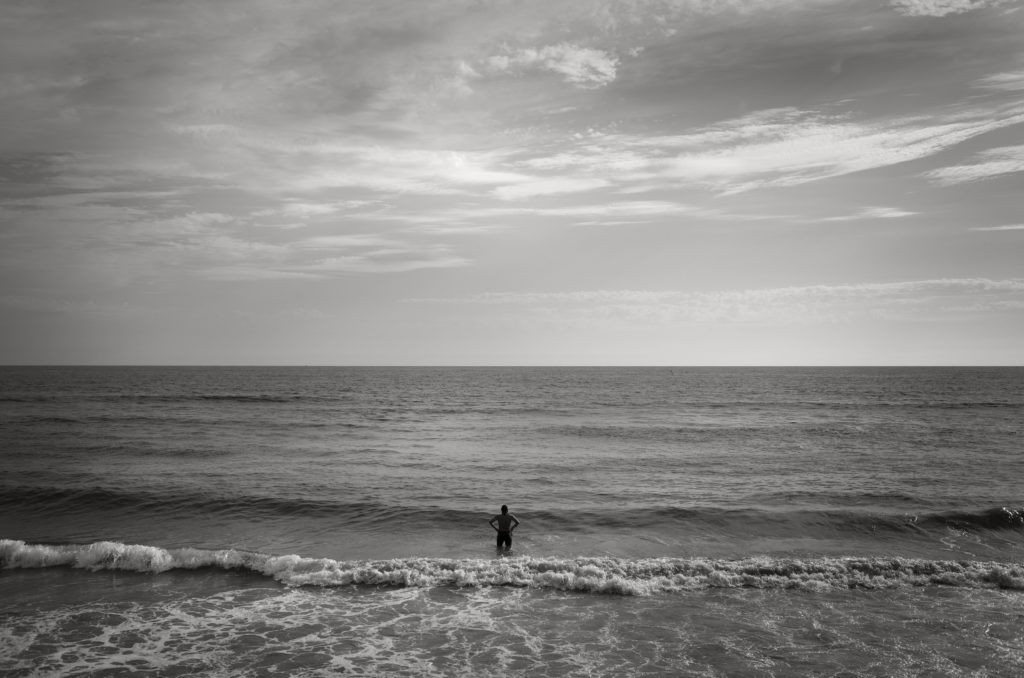
It is human sociality playing out on one scale, while the sand, tides, and landforms work on others. I see people playing and enjoying themselves and making meaning on the edge of the sea, in the midst of larger changes, processes, dynamics. Like the photograph of the surfers in the water and the spectators looking on from the cliff above (Image 2). That image is from “Steamer Lane” in Santa Cruz, which is a well-known surf spot. The wave itself depends in part on the geomorphology of the cliff itself, which reflects and bends those waves as they come in. But it’s all changing, slowly. The rock in the foreground is actually a leftover from an old arch that used to be there decades ago. You can see it in old images from the late 19th century (see this piece by Gary Griggs). The arch collapsed over time, and now the remnants are wearing away day by day, tide by tide, wave by wave.
Those first two images have a serenity to them, but they still hint at human impacts and predicaments. Two of the photographs are much more contemplative and perhaps idyllic (Images 3 and 4). Both of them were taken around the same time, and they capture a behavior that many of have seen again and again: people often just stare out at the ocean. It is captivating. These two images let that captivating peacefulness stand. But when I look at them, I can’t let it alone. I think about the sand they are standing on, which is something that has to be pumped in and maintained. Cities and counties spend millions of dollars on this “beach nourishment.” These spaces have to be produced, you see, before they can serve as the stage for contemplative oceanic daydreams. And then they wash away. It’s tragic in a sense, all this change and upheaval. But, like the lone person in Image 4, many people try to find their moments when and where they can.
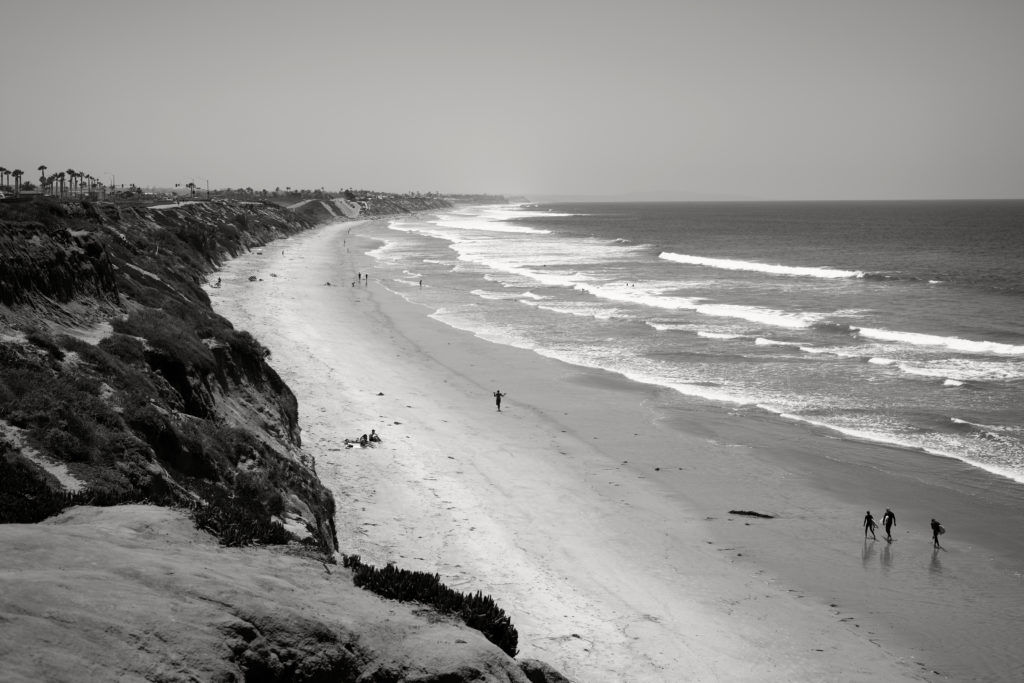
There is a lot of that going on along the coast. Look at Image 5. There’s a figure that’s just below dead center in the frame. If you look closely, you can see that they are carrying a stick on their shoulders, just strolling along the beach. There are people on the beach sitting on their towels, and those surfers straggling behind in the lower part of the frame. Everyone seeking their stories, living out their lives. Once again, the eroding cliffs on the left of the frame, combined with the roads and other infrastructure along the coast, speak to other challenges, hazards, and unknown futures.
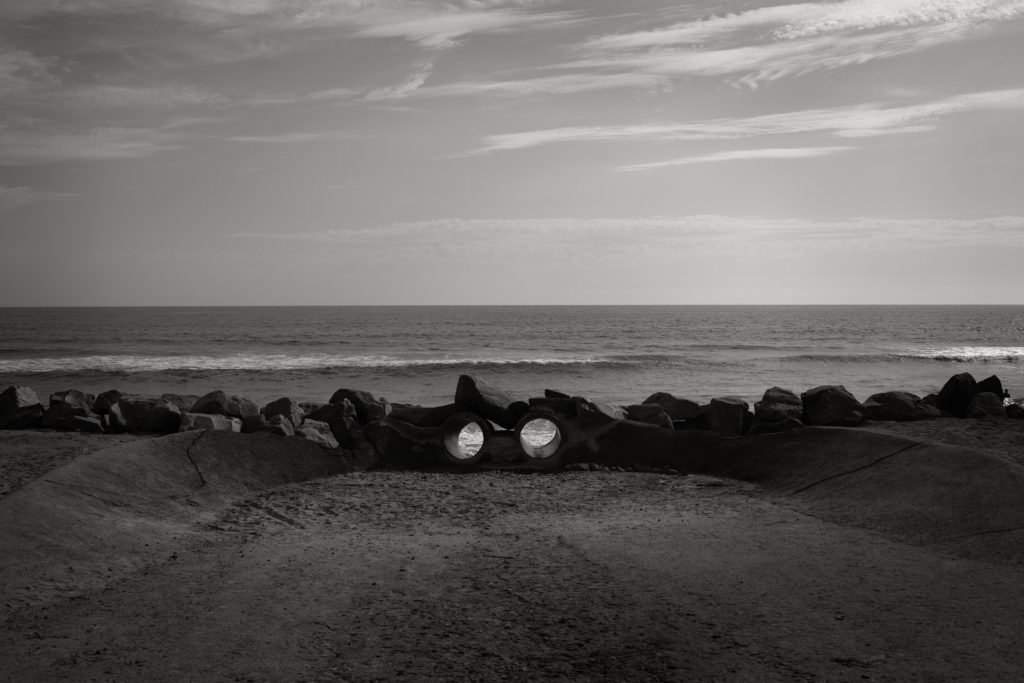
The last image (Image 6) speaks to some of those complications. Coasts and beaches change, and humans adapt and adjust. Sometimes they try to assert more control. They build sea walls, groins, and concrete storm drains, bolstered by rip rap (as pictured here), which attempt to stave off and direct the energies of natural and anthropogenic change. Such efforts can work…for a time. Like that solitary figure hidden on the right side of the frame (look closely at Image 6), such processes can make us feel small, surrounded, and overpowered. And yet, like that single human figure, and the others throughout these images, we humans swim, play, contemplate, push back, and adapt. We persist. Despite the immensity and inevitability of it all.
Maybe that’s what Harry Callahan was hinting at, all those years ago.
Ryan Anderson is a cultural and environmental anthropologist. He is an assistant professor in the department of anthropology at Santa Clara University, and a Research Associate at the Institute of Marine Sciences at UC Santa Cruz. You can find him on Twitter here: @anthropologia
All images and text copyright Ryan B. Anderson 2021